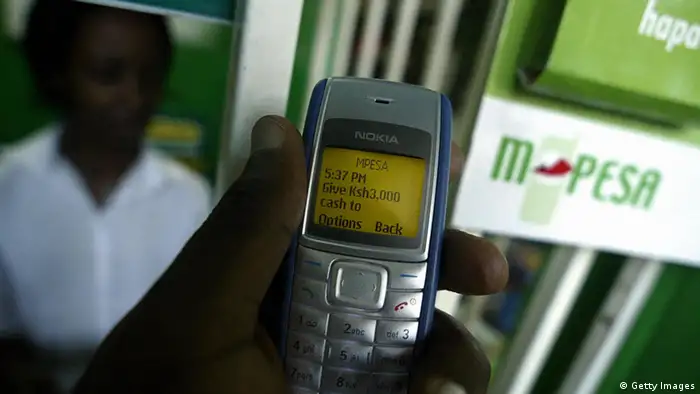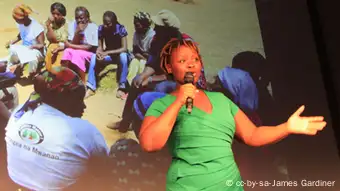Insights
Innovative digital lessons from Kenya
Africa’s digital transformation is in full swing, and one of the places where a good deal of innovation is taking place is Kenya. ICT enthusiast Martha Chumo explains how Kenyans are using digital technology.
Kenya is one of the countries at the forefront of digital innovation in Africa. Here’s why…
Not everyone has a smartphone? No problem.
Not just in Kenya, but in most of Sub-Saharan Africa, most people use mobile phones to access the Internet. Not everyone has a smartphone, though. People who want to access online services with a feature phone can use very simple SMS options. You can bet on your favorite team or get results on sporting events and information on jobs. There are also SMS-based services for mothers who are pregnant or for mobile banking – you don’t actually need Internet access to do your banking from a phone.
Mobile money is used for more than paying for stuff.
In Kenya, for instance, you can pay for your taxi or drinks, electricity or TV bills with a mobile money service. But now this has been transformed into a bank. You can put money into a savings account and apply for a loan. This works well because not everyone has all the documents a bank needs when they apply for a microloan. But it’s very easy to borrow small amounts through the mobile-based financial service M-Pesa, for example. You can also easily connect a mobile money service to your account at a formal bank and withdraw or deposit money there from your phone.
Digital technology facilitates social banking.
Kenya has always had a culture of “changas”, groups of people, men or women, who get together and instead of taking money to the bank, they “bank in each other”. That is, they give small amounts of money to each other. There are now different services, such as Changasoft or M-Changa, which have moved into the digital realm.
Crowdsourcing is huge these days, but has a long tradition.
Crowdsourcing is one of the easiest ways to get money these days. But it’s rooted in an old culture that dates back before Kickstarter and Indiegogo were launched. If someone wanted to go to university or any school for that matter, villagers would get together and contribute money to allow that person to get an education. Now there’s actually software that facilitates that. So for us, the idea behind Indiegogo isn’t a new concept, but the platform just allows us to do online what we’ve always done in person.
Twitter is a great tool for local communication…
Twitter is a very effective way for chiefs in rural areas to communicate with people in their villages. It’s used to announce meetings, give out warnings or provide any kind of information about administrative matters.
…and for influencing social change.
Human Rights activists have changed the methods they use to mobilize people. In Kenya, one example has been the “My Dress, My Choice” campaign. After several incidents of harassment against women in 2014, activists went on social media and created the hashtag #mydressmychoice. It went completely viral and put pressure on authorities to arrest the perpetrators. And, it’s only one of many Twitter campaigns. The Kenyan government has also begun to use social media and these days, #Kenya is one of the most popular hashtags in the world. A lot of people are using it as a platform to make their voices heard.
It’s practical to use government services via social media.
Authorities such as the immigration office or the higher education loans board are very active on social media. They use social media to offer their services in more efficient ways. Officials who might not be able to serve everyone personally use Twitter to write short and concise messages. Their responses to inquiries from the public are also very quick.
Online services connect Kenyans with people in the diaspora.
People living abroad like online stores such as MamaMikes to keep up the tradition of sending gifts to people still in Kenya, for instance for Christmas. But more importantly, people in the diaspora can manage their investments back home or build a house via online services.
A plethora of apps offers useful, even life-saving tips.
Apps have become a big deal in Kenya and offer a variety of services, including helping kids to do their homework after school. Another provides practical information to mothers on prenatal and postnatal care. This is very useful for women who live far away from clinics and cannot easily go in for check-ups. The apps let mothers communicate with health care practitioners to let them know how they’re doing and get medical advice in case they need help.
The Author is currently setting up Nairobi Dev School. Check out also Martha´s session (together with Mugethi Gitau and Sheilah Birgen) at the re:publica 2015 in Berlin: 10 things Europe can learn from Kenya.
DW recommends
- Date 12.06.2015
- Author Martha Chumo
- Feedback: Send us an e-mail. Please include your name and country in your reply.
- Print Print this page
- Permalink https://p.dw.com/p/1FeXg
- Date 12.06.2015
- Author Martha Chumo
- Send us your feedback.
- Print Print this page
- Permalink https://p.dw.com/p/1FeXg


